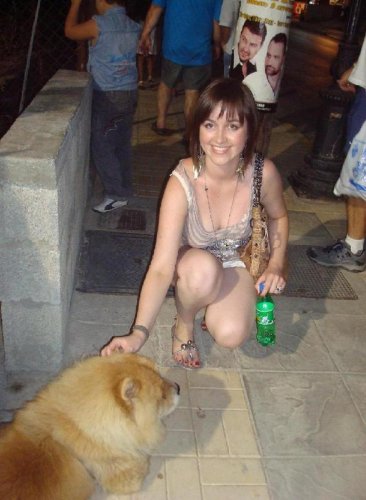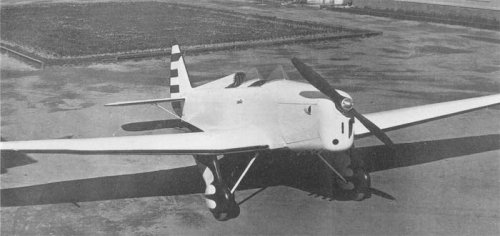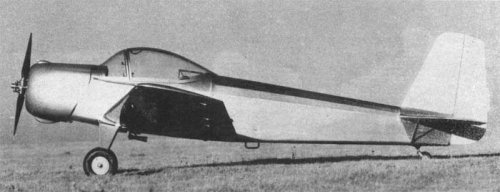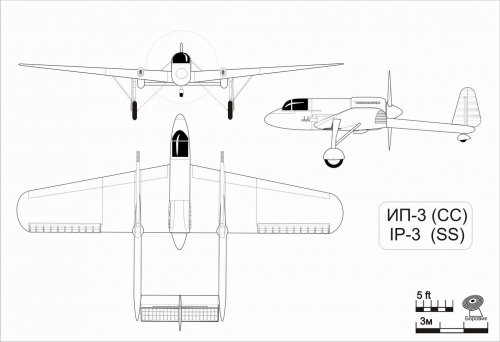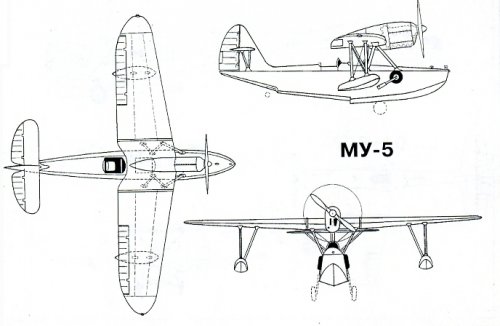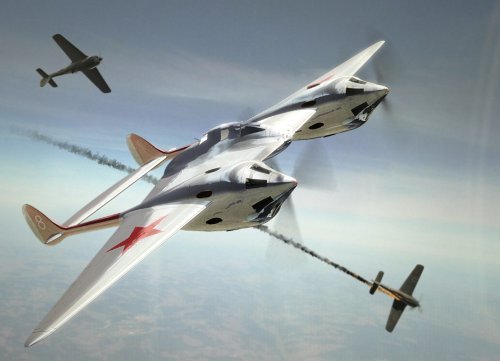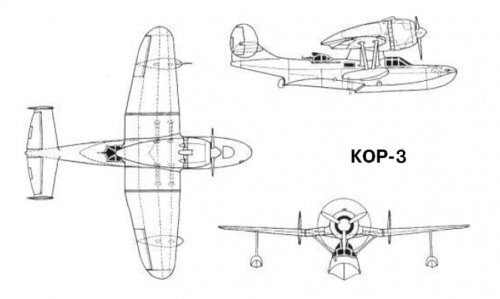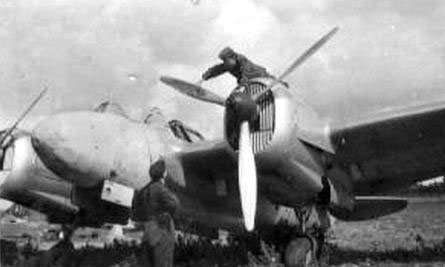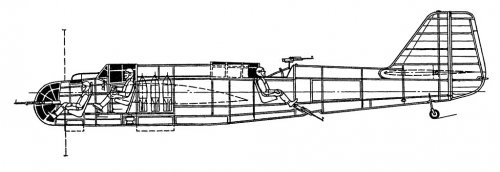Hi all! Excuse me please for the late answer.
Silencer1 said:
I wonder, if there were any "low-speed" or "slow-speed" fighters in any country exists

Maybe it sounds a bit curious, but in 1930s “high-speed fighter” was actually a special term in the USSR. The opposite was, of course, not “low-speed”, but “maneuverable” fighter
(Маневренный истребитель). There was a conception that the Air Force must have both these two types of fighters in service, supplementing each other (like heavy fighters and light fighters of nowadays – F-15 and F-16, Su-27 and MiG-29). Already Polikarpov I-3 and Tupolev/Sukhoi I-4 were ordered and designed in context of this conception (I-3 was “speed fighter”, I-4 “maneuverable”). But the “classic” pair illustrating this theory was, of course, I-16 and I-15/152/153.
But even at that time, fighters of both kinds were placed into common “I” category. Saying about much later Efremov project (or Yefremov, to spell more correctly), it is difficult to say if “SI” really could become a new category, or it would be only an exclusion. There were some other “unusual” designations which didn’t become “true” categories, because each of them had only one representative – remained at prototype stage, or even unrealized. Here are some of them:
MTBT (
МТБТ, Морской тяжелый бомбардировщик-торпедоносец – Heavy sea bomber/torpedo bomber): Tupolev (ANT-11), 1929, project only. See at
http://www.secretprojects.co.uk/forum/index.php/topic,7923.msg69811.html#msg69811.
TOM (Торпедоносец открытого моря – Torpedo bomber for open seas): Richard (“Rishar” – Russian spelling) TOM-1, 1930, 1 prototype built.
http://www.airwar.ru/enc/bww1/tom1.html,
http://www.navy.su/aviation/airplanes-before1945/tom1/index.htm,
http://eroplan.boom.ru/shavrov/chr7/sea/rish.htm.
LSh (ЛШ, Легкий штурмовик – light attack): prototype by TsKB, 1930. Before the end of construction, rebuilt as an armoured TSh-1. See at
http://eroplan.boom.ru/shavrov/chr8/scout/armor.htm.
ShON (ШОН, Штурмовик особого назначения – special purpose attack aircraft): prototype by TsKB (#23), 1931. TSh-1/2 derivative with folding wings, designed for planned aircraft carriers.
http://www.airwar.ru/enc/bww1/shon.html
LR (ЛР, Легкий разведчик – light reconnaissance): Kocherigin, 2 prototypes in 1933-34 (also designated TsKB-1).
http://www.airwar.ru/enc/other1/lr.html,
http://eroplan.boom.ru/shavrov/chr8/scout/LR.htm
SR (СР, Скоростной разведчик – high-speed reconnaissance): Kocherigin, 1935-36, 3 prototypes (also designated TsKB-27).
http://www.airwar.ru/enc/other1/sr.html
MPI (МПИ, Многоместный пушечный истребитель – multi-seat cannon fighter): Polikarpov MPI-1 – a version (or just another designation) of the VIT-1.
http://www.airwar.ru/enc/aww2/vit1.html
LBSh (ЛБШ, Легкий бронированный штурмовик – light armored attack aircraft, or simply “Sh”): Kocherigin, 1939, 2 prototypes built (Sh-1 with M-88 engine and Sh-2 with M-87A). R-9 derivative.
http://www.airwar.ru/enc/aww2/lbsh.html
SPB (СПБ, Скоростной пикирующий бомбардировщик – high-speed dive bomber): Polikarpov, 1940, 5 built and some more unfinished. VIT-2 derivative, competitor for Petlyakov PB-100 later known as Pe-2.
http://www.airwar.ru/enc/bww2/spb.html
OPB (ОПБ, Одноместный пикирующий бомбардировщик – single-seat dive bomber): Kocherigin (OKB-5, sometimes mentioned as OPB-5), 1940, prototype was built but not tested due to absence of valid engine.
http://www.airwar.ru/enc/bww2/opb5.html
VI (ВИ, Высотный истребитель – high-altitude fighter): Petlyakov VI-100 – 1 prototype, 1939-40, Pe-2 and Pe-3 precursor.
http://www.airwar.ru/enc/fww2/vi100.html
OBSh (ОБШ, Одноместный бронированный штурмовик – single-seat armored attack aircraft): Kocherigin (OKB-3), late 1939, project only (OPB precursor).
MDRT (МДРТ, Морской дальний разведчик-торпедоносец – long-range sea recon/torpedo bomber): Beriev, 1940, project only.
TI (ТИ, Тренировочный истребитель – trainer fighter): Gribovsky TI-28 (G-28), 1940, 1 prototype built, 2nd unfinished.
http://www.airwar.ru/enc/other2/g28.html
PBSh (ПБШ, Пикирующий бронированный штурмовик – diving armored attack): Mikoyan PBSh-1 and PBSh-2, both 1940, projects only.
http://www.airwar.ru/enc/aww2/pbsh.html
ShB (ШБ, Штурмовик-бомбардировщик – attack/bomber): Sukhoi 1940 prototype, derived from Su-2.
http://www.airwar.ru/enc/aww2/shb.html
DIS (ДИС, Дальний истребитель сопровождения – long-range escort fighter): Mikoyan DIS-200 (MiG-5), two prototypes (1941 and 1943).
http://www.airwar.ru/enc/fww2/mig5t.html,
http://www.airwar.ru/enc/fww2/mig5.html
This list can be continued… Actually, the “SB” category also can be added here – the only difference is that sole representative of it became mass-produced and very popular aircraft. What about the reasons for all this variety - I must say that not all these indexes were actualy military designations, but some of them were given by designers themselves (especially these from 1939-40).
Returning to the
IP-3 - I have mentioned my source in my first post. It is Ukrainian aviation magazine
Авиация и время (Aviatsia i Vremya; Aviation&Time), No.5-1999. In this issue was Mikhail Maslov's monograph about aircrafts with Kurchevsky's recoilless guns. Its main subjects were Grigorovich I-Z and Chernyshov/Tupolev I-12 (ANT-23), with many photos and scale drawings of both. But beside them, some projects were also described - such as Cheranovsky BICh-17, and the IP-3.

